
Astronomy: Making a Mirror
HOW TO MAKE A MIRROR
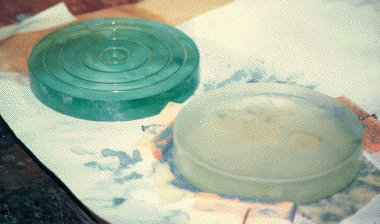
Mirror and Tool
We start with a mirror blank. This is a round piece of Pyrex glass with one flat face (the bottom) and one face slightly shaped, but very rough. We use a plate glass "tool" which is identical in diameter to the mirror blank to smooth the glass blank and shape the surface into a paraboloid. The photo to the side shows the tool on the left and the mirror blank on the right.
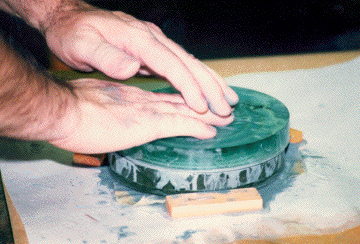
Preparing the Mirror Surface
Four stages of preparation are required before beginning to shape the mirror into a paraboloid. The purpose of the preparation is to make the surface of the mirror progressively smoother. Telescope mirrors have the smoothest surfaces ever made. The highest "peaks" and lowest "valleys" on the mirror surface must be much smaller than the wavelength of light which we will be observing. Visible light has a wavelength around 550 nm (21.6 micro-inches, or 0.022 mils).
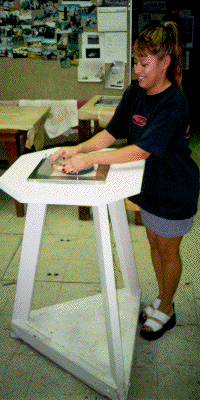
Grinding and Polishing
The four stages are rough grinding, fine grinding, smoothing, and polishing. During grinding, silicon carbide (SiC) grit is used much in the same way as coarse sandpaper. Finer grains are used until SiC is no longer a viable compound. At that point, we switch to aluminum oxide, which is much finer, and begin smoothing. Finally, when the required particle size approaches 3 microns, we switch to cerium oxide and begin polishing the mirror. Polishing an 8 inch mirror takes about 5 hours total. As the mirror is smoothed and polished, it becomes increasingly reflective until the surface "peaks" and "valleys" are less than the wavelength of visible light as described above.
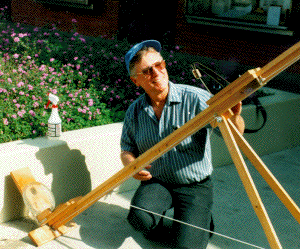
Measuring the Focal Length
In order to achieve a desired focal length, it is necessary to periodically measure it during rough and fine grinding. An easy way to measure the focal length is to let the sun reflect off the mirror and measure the distance from the mirror to the image of the sun as shown below. By adjusting our grinding technique, we can control the focal length of the mirror.
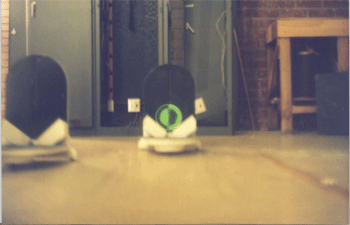
The Foucault Test
How do we know when we are done? The Foucault test is used to measure the shape of the mirror surface. Knowing the actual shape, we can adjust our figuring approach until the mirror is sufficiently close to the desired paraboloidal shape. Here you see an image of a telescope mirror seen through the Foucault knife edge tester. The green and dark shadows reveal the slope of the mirror at different zones.
The Finished Product
See several examples of finished telescopes made by Astronomy 13 students (and the Professor).